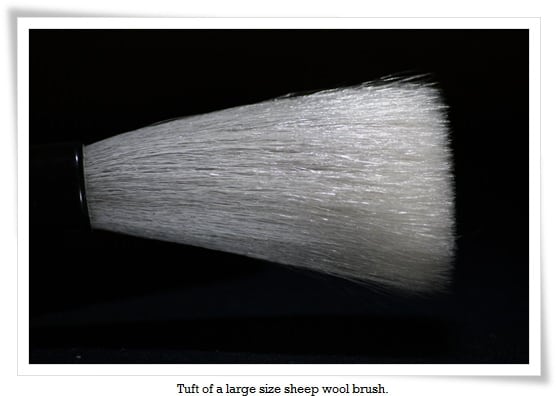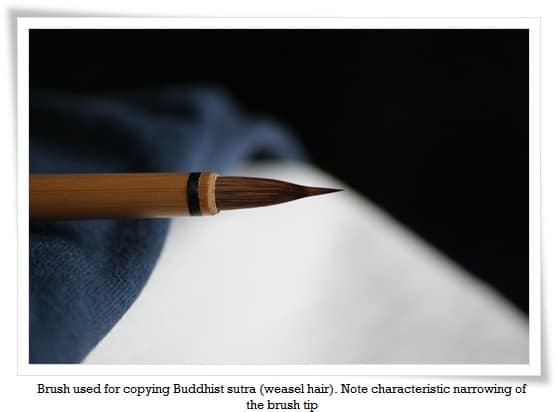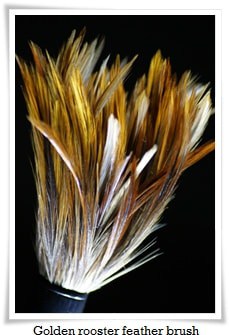There are three main types of brushes: soft, hard and mixed. Mixed brushes, as the name itself suggests, are those made of both soft and hard hairs. They are usually more suitable for beginners.
The softness of the brush depends on the type of hairs used in production. The most common animal hair brushes are as follows:
Chinese goat wool brush (羊毛, youmou). Those brushes are flexible, durable, yet soft and very absorbent. The best hairs used for manufacturing those brushes are nearly transparent and of amber colour, with sort of a yellow-brown shading. They are also difficult to control, therefore not recommended for beginners. Soft brushes used skillfully deliver very interesting and, to an extent, unpredictable lines. Yomou brushes are of the most expensive of all. Long and thick, made of soft superb quality wool, they can easily cost over $15000 USD. Japanese goat brushes are of inferior quality due to lower flexibility of the hairs, for which reason the wool for their production is being imported from China.
Weasel hair brush (鼬毛, itachike). It has exactly the opposite features of a wool brush. The hairs are hard and yet amazingly flexible. Even if fully loaded with ink the brush’s tip will move fast and with accuracy. Weasel hair brushes are not cheap, though they are not as expensive as the youmou ones. For brush making, weasel torso hairs are used. There are three main countries supplying weasel hair. These are China, Japan and Korea. The best quality hairs are from Chinese weasels (most flexible, the longest and with most durable hair ends).
Racoon dog hair brush (狸毛, rimou). Since the tail hairs have a tendency to shrink, mainly spinal (black) and abdominal hairs (white) are used. Japanese racoon dog brushes have better hair ends yet weaker flexibility than the Chinese ones, therefore are not suitable for calligraphy brushes (only painting brushes). Chinese racoon hairs are suitable for all brushes except fine-point ones.
Mountain rabbit (山兎毛, yamausagike). The hairs are fairly short but have fantastic flexibility and very strong hairs ends. They are suitable for manufacturing brushes for small character writing or drawing fine lines in sumi-e (ink painting). Mountain rabbits are rare and therefore the brushes made of their hairs are quite pricey.
Horse hair brush (馬毛, umake). They are made of any kind of horse hair from any part of the body, although not all of them are suitable for calligraphy. For instance, hair from horse’s back is softer and it is used for manufacturing mixed brushes (the outer layer of the tuft). Other parts, such as torso hair, are usually longer (up to 20cm) and they are used for large size brushes. Hair from other parts have weaker flexibility and are used for making painting brushes.
Bird feathers (鳥毛, torike). Mainly chicken feathers are used, although there are brushes made of guinea fowl, green pheasant, etc. Those brushes are extremely soft and absorbent, thus very difficult to control. However, they give a spectacular effect of a “shredded” line, which adds a certain ambience to a given work.
Exotic brushes such as those made of rat, mouse, cat or even tiger whiskers are also available. They usually are very small and are used for drawing fine lines in sumi-e (墨絵, ink painting) or writing small scale calligraphy.
Other hair such as that of a cat, squirrel, pig, or cow are of a lower quality and are not being considered in the above classification. Human hair is only used for traditional brushes made from a hair of newly born baby. Due to low flexibility, and weakness they are not suitable for writing.



